
Ordesa y Monte Perdido National Park: Spain's Hidden Natural Gem
Explore the stunning landscapes, diverse wildlife, and thrilling hiking trails of Ordesa y Monte Perdido National Park in Spain's Pyrenees.
Nestled in the heart of the Pyrenees, Ordesa y Monte Perdido National Park is a breathtaking destination that offers some of Spain's most stunning natural landscapes. This UNESCO World Heritage site is a paradise for nature lovers, hikers, and adventure enthusiasts. With its dramatic cliffs, lush valleys, and serene waterfalls, the park provides a perfect escape from the hustle and bustle of city life. The park is home to Monte Perdido, the third-highest peak in the Pyrenees, standing tall at 3,355 meters. The views from the summit are nothing short of spectacular, offering panoramic vistas of the surrounding area. The Ordesa Valley, one of the park's highlights, is a glacial valley that boasts diverse flora and fauna, making it a must-visit for wildlife enthusiasts. For those who enjoy hiking, the park offers a variety of trails that cater to all levels of experience. From easy walks through beech forests to challenging climbs up rocky terrains, there's something for everyone. Don't miss the Cola de Caballo, a stunning waterfall that can be reached via a scenic hike through the Ordesa Valley. Whether you're looking to relax in nature or seek thrilling adventures, Ordesa y Monte Perdido National Park has something to offer for every type of traveler.
Local tips in Ordesa y Monte Perdido National Park
- Visit in late spring or early autumn for mild weather and fewer crowds.
- Wear sturdy hiking boots and bring plenty of water, especially if you plan on tackling the more challenging trails.
- Check weather conditions before your visit; mountain weather can be unpredictable.
- Consider hiring a local guide for an enriched experience and to ensure you don't miss any hidden gems.
- Bring binoculars for birdwatching; the park is home to a variety of bird species.
Ordesa y Monte Perdido National Park: Spain's Hidden Natural Gem
Nestled in the heart of the Pyrenees, Ordesa y Monte Perdido National Park is a breathtaking destination that offers some of Spain's most stunning natural landscapes. This UNESCO World Heritage site is a paradise for nature lovers, hikers, and adventure enthusiasts. With its dramatic cliffs, lush valleys, and serene waterfalls, the park provides a perfect escape from the hustle and bustle of city life. The park is home to Monte Perdido, the third-highest peak in the Pyrenees, standing tall at 3,355 meters. The views from the summit are nothing short of spectacular, offering panoramic vistas of the surrounding area. The Ordesa Valley, one of the park's highlights, is a glacial valley that boasts diverse flora and fauna, making it a must-visit for wildlife enthusiasts. For those who enjoy hiking, the park offers a variety of trails that cater to all levels of experience. From easy walks through beech forests to challenging climbs up rocky terrains, there's something for everyone. Don't miss the Cola de Caballo, a stunning waterfall that can be reached via a scenic hike through the Ordesa Valley. Whether you're looking to relax in nature or seek thrilling adventures, Ordesa y Monte Perdido National Park has something to offer for every type of traveler.
When is the best time to go to Ordesa y Monte Perdido National Park?
Iconic landmarks you can’t miss
Bus - Centro Visitantes Sector Ordesa - Parking Libre
Discover the breathtaking landscapes and diverse wildlife of Ordesa National Park, a UNESCO Biosphere Reserve in the heart of the Pyrenees.

Ordesa y Monte Perdido National Park Visitor Centre
Explore the Ordesa y Monte Perdido National Park Visitor Centre for insights into this breathtaking natural wonder in the Pyrenees, Spain.
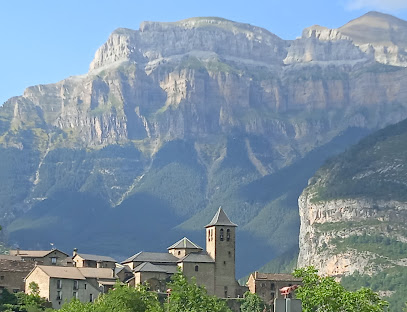
Cascada de la Cola de Caballo
Experience the breathtaking Cascada de la Cola de Caballo in Ordesa y Monte Perdido National Park, a nature lover's paradise filled with stunning landscapes and rich biodiversity.
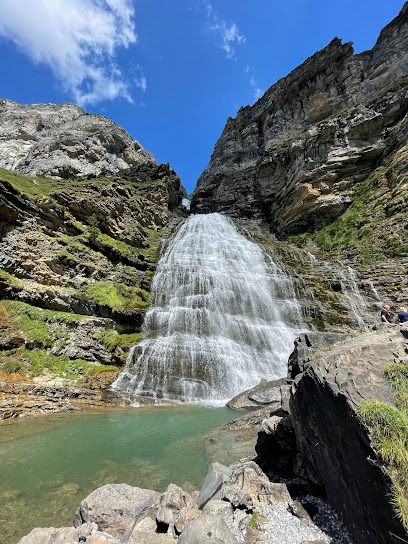
Llanos de La Larri
Explore the breathtaking landscapes and rich biodiversity of Llanos de La Larri, a serene national park in the heart of Huesca.
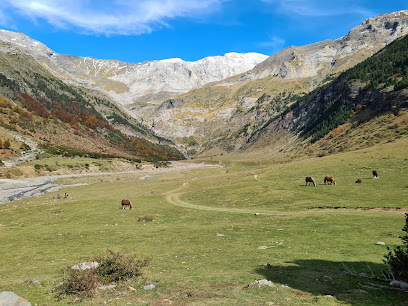
Monte Perdido
Explore Monte Perdido, a UNESCO World Heritage mountain peak, famous for its breathtaking views, diverse ecosystems, and thrilling outdoor adventures.
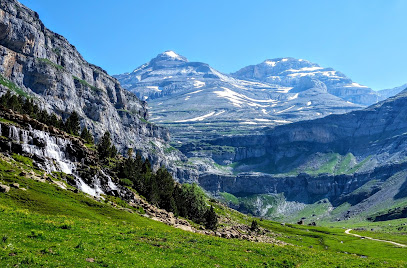
Ordesa Valley
Explore the stunning Ordesa Valley, a UNESCO World Heritage site in the Pyrenees, known for breathtaking vistas, vibrant wildlife, and unforgettable hiking trails.
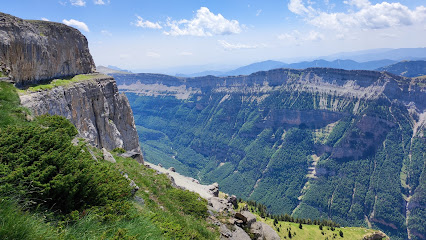
Refugio de Góriz | Ordesa 2.200 m
Discover the breathtaking beauty of Refugio de Góriz in Ordesa National Park, where nature and comfort blend for an unforgettable retreat.
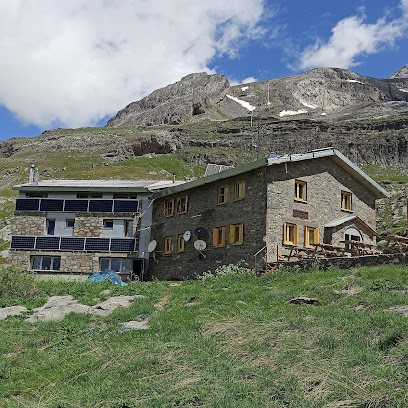
Miradores de Ordesa 4x4.Excursiones a P.N Ordesa y Monte Perdido. y Bujaruelo en 4×4
Discover the stunning beauty of Ordesa y Monte Perdido National Park through immersive 4x4 excursions with Miradores de Ordesa.
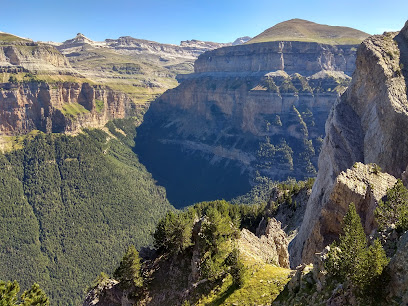
Gradas de Soaso
Explore the stunning Gradas de Soaso in Ordesa Valley—an ecological paradise with breathtaking waterfalls and picturesque hiking trails in the Spanish Pyrenees.
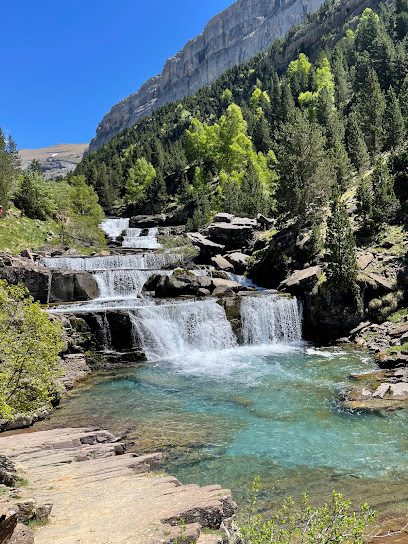
Guias de Torla
Explore the breathtaking beauty of Torla-Ordesa with thrilling adventure sports at Guias de Torla, a must-visit for outdoor enthusiasts.
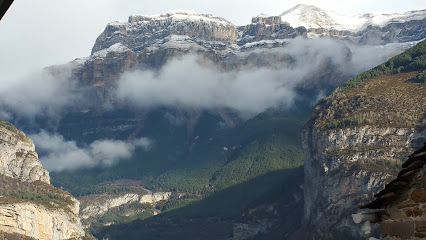
Senda de los Cazadores
Discover the breathtaking beauty of Senda de los Cazadores, a premier hiking area in the stunning Valle de Ordesa, perfect for nature lovers and adventurers alike.
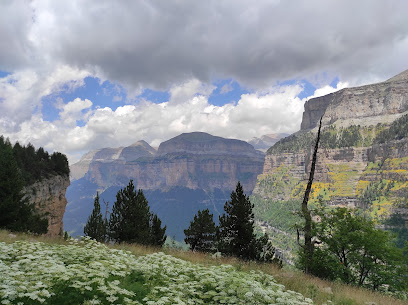
Cascada de la Cueva
Discover the breathtaking beauty of Cascada de la Cueva, a must-visit scenic spot in Huesca, surrounded by nature and stunning landscapes.

Valle de Otal
Explore the breathtaking beauty of Valle de Otal, a hiker's dream in the heart of the Ordesa National Park, perfect for nature lovers and adventure seekers.
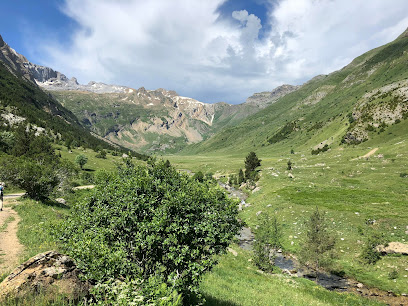
Cascada del Estrecho
Discover the stunning Cascada del Estrecho in Ordesa National Park, a breathtaking waterfall surrounded by majestic mountains and lush landscapes.
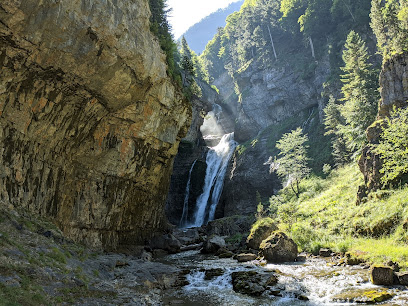
Cascada de Arripas
Explore the breathtaking beauty of Cascada de Arripas, a stunning waterfall in the heart of the Torla-Ordesa region, perfect for nature lovers and adventurers.
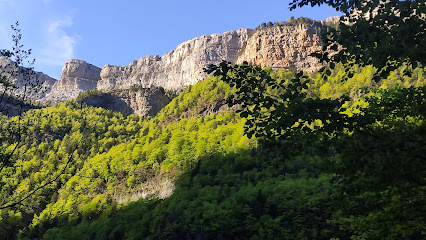
Unmissable attractions to see
Pont d'Espagne
Experience the breathtaking beauty of Pont d'Espagne, a must-visit tourist attraction in the heart of the Pyrenees, where adventure meets stunning landscapes.
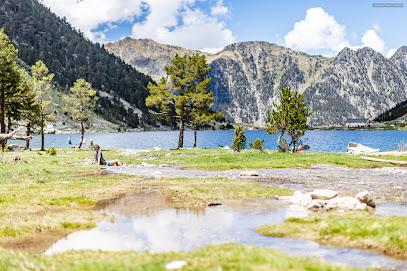
Bus - Centro Visitantes Sector Ordesa - Parking Libre
Explore the stunning Ordesa National Park Visitor Center, your gateway to breathtaking landscapes and outdoor adventures in the heart of the Pyrenees.

Cirque de Gavarnie
Explore the stunning Cirque de Gavarnie, a UNESCO World Heritage site in the French Pyrenees, with breathtaking cliffs, waterfalls, and outdoor adventures.
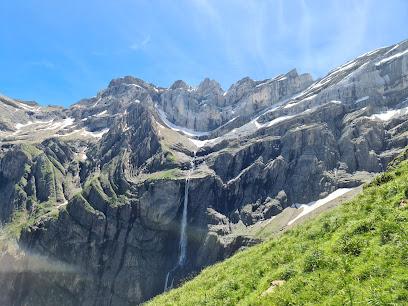
Cascada de la Cola de Caballo
Experience the stunning beauty of Cascada de la Cola de Caballo in Ordesa y Monte Perdido National Park, a must-see for nature lovers visiting Spain.
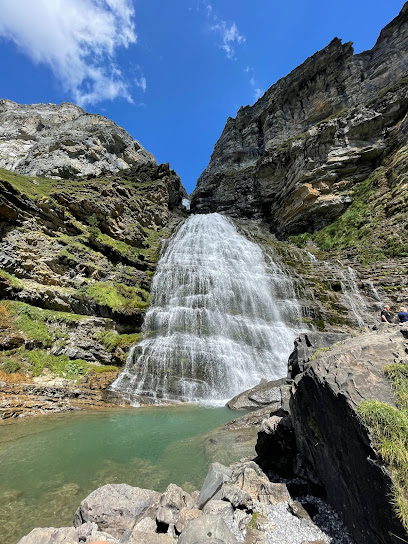
Llanos de La Larri
Explore the breathtaking beauty of Llanos de La Larri, a national park in Huesca perfect for hiking, wildlife watching, and unforgettable outdoor adventures.
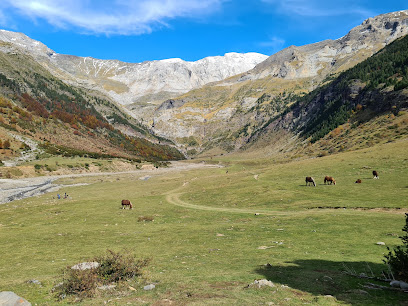
Cueva del Oso
Explore Cueva del Oso, a stunning cave attraction in Huesca, perfect for hiking, nature walks, and discovering geological wonders.
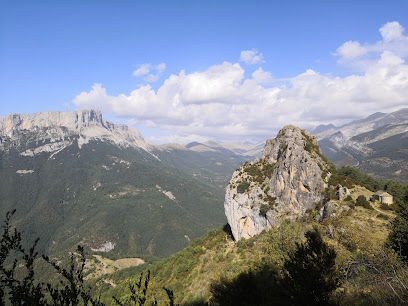
Dolmen de Tella
Explore the Dolmen de Tella: A prehistoric marvel set in the breathtaking landscapes of Huesca, Spain, rich in history and mystery.
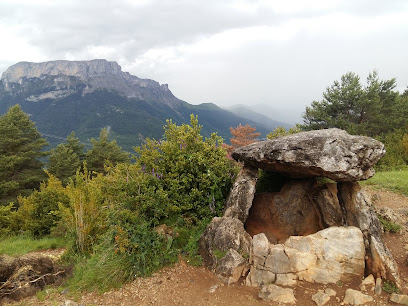
Valle de Bujaruelo
Immerse yourself in the stunning landscapes and rich biodiversity of Valle de Bujaruelo, a hiker's paradise in the heart of the Pyrenees.
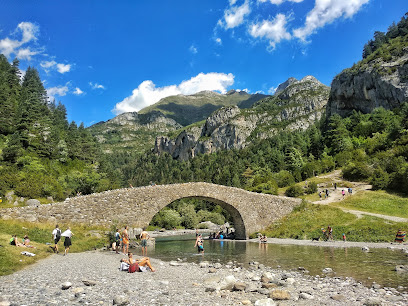
Ermitas de Tella
Explore the historical hermitages and stunning landscapes of Ermitas de Tella, a hidden gem in the Huesca region of Spain perfect for hikers and nature lovers.

Puente de Oncins
Discover the breathtaking Puente de Oncins, a stunning bridge in Torla-Ordesa offering majestic views and serene nature experiences in the heart of the Pyrenees.
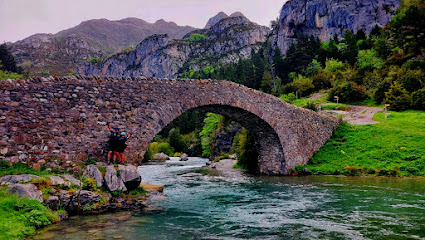
Pradera de Ordesa
Experience the breathtaking landscapes and diverse hiking trails of Pradera de Ordesa, a must-visit destination in the Pyrenees for nature lovers.
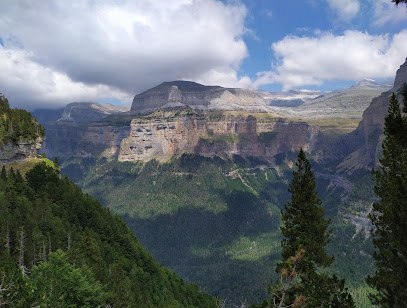
Cascada de La Larri
Discover the breathtaking beauty of Cascada de La Larri, a stunning waterfall and nature preserve in the heart of the Spanish Pyrenees.
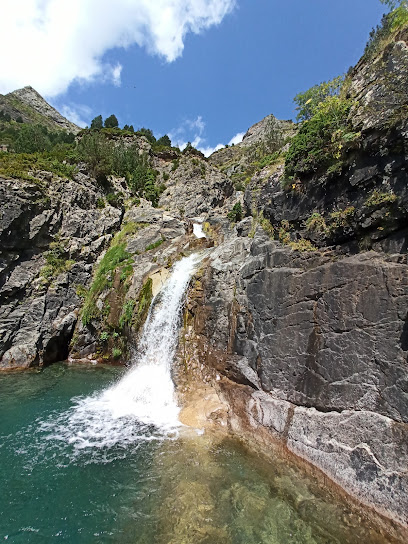
Gradas de Soaso
Explore Gradas de Soaso: A breathtaking ecological park with stunning waterfalls and scenic hiking trails in the Ordesa Valley, perfect for nature lovers.
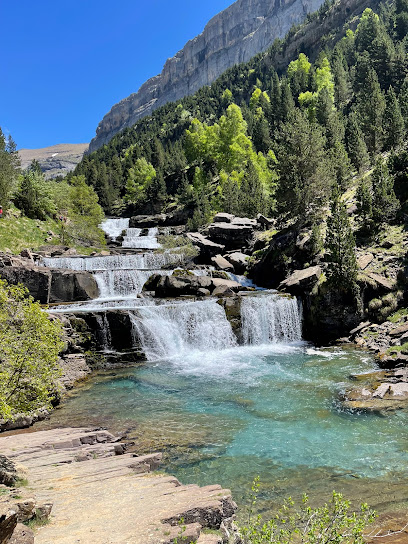
Senda de los Cazadores
Experience the breathtaking beauty of Senda de los Cazadores in Ordesa Valley, a top hiking destination surrounded by stunning landscapes and rich biodiversity.
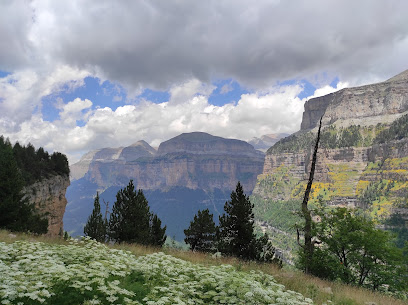
Cascada de la Cueva
Experience the breathtaking beauty of Cascada de la Cueva in Torla-Ordesa, a stunning waterfall surrounded by lush landscapes and thrilling hiking trails.
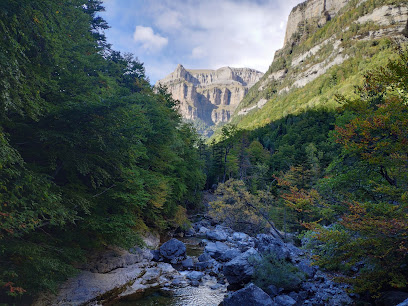
Essential places to dine
Ordesa 88
Experience authentic grilled cuisine at Ordesa 88, where every meal is a celebration of flavor in beautiful Aínsa.
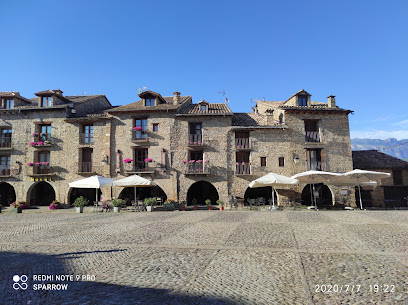
Restaurante La Cocinilla
Experience authentic Spanish cuisine at Restaurante La Cocinilla in Torla-Ordesa - where flavor meets breathtaking natural beauty.
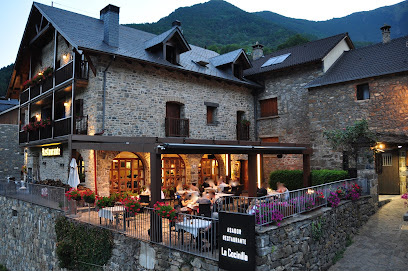
El Duende
Experience authentic Spanish cuisine at El Duende in Torla-Ordesa - where every dish tells a story amidst breathtaking mountain views.
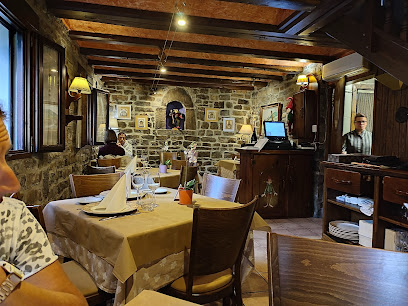
Restaurante Pizzería El Taillón
Experience authentic Italian cuisine at Restaurante Pizzería El Taillón in Torla-Ordesa—where delicious pizzas meet breathtaking mountain views.
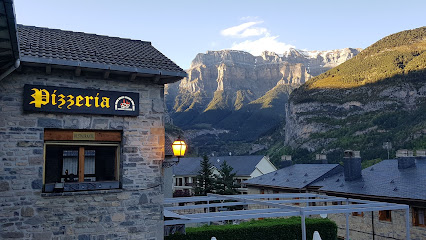
Restaurante Casa Joaquín
Experience authentic Spanish cuisine at Restaurante Casa Joaquín in Broto - where every dish tells a story of tradition and flavor.
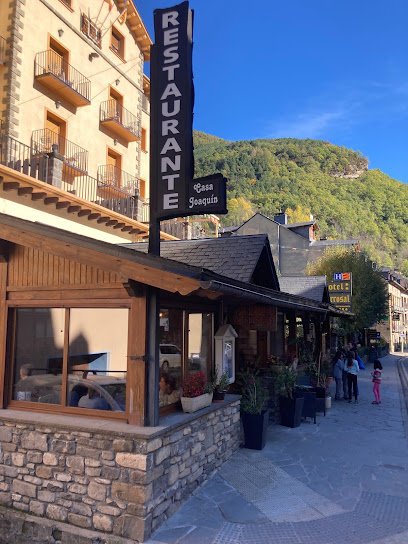
Asador Pizzeria Portal de Ordesa / Asador de Adolfo
Experience authentic grilled dishes and pizzas in the picturesque setting of Huesca at Asador Pizzeria Portal de Ordesa.
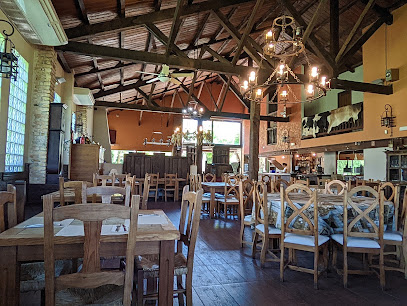
Asador Casa Diego
Discover the heart of Spanish grilling at Asador Casa Diego in Gavín – where every meal is an unforgettable experience.
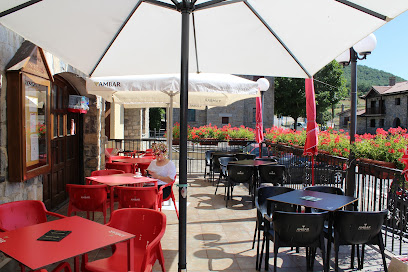
Hotel Restaurante Casa Frauca
Discover the perfect blend of cozy accommodations and exquisite dining at Hotel Restaurante Casa Frauca in scenic Sarvisé.

Casa Vallés
Experience authentic Spanish cuisine at Casa Vallés, a lively tavern in Broto known for its delicious tapas and stunning mountain views.
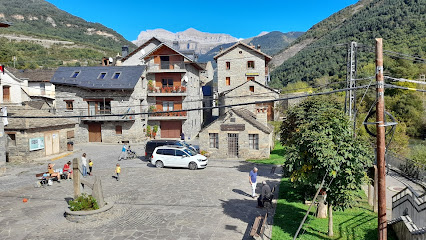
Hotel Restaurante Lamiana
Experience delightful family-friendly dining at Hotel Restaurante Lamiana in Huesca, where local flavors meet stunning landscapes.
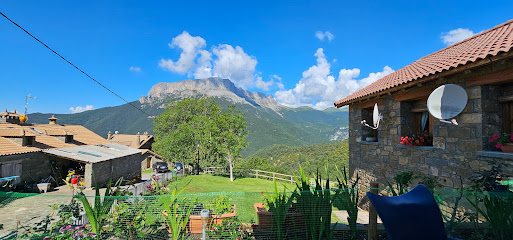
Refugio de Góriz | Ordesa 2.200 m
Discover Refugio de Góriz: Your gateway to adventure in Ordesa National Park with stunning views and delightful cuisine.
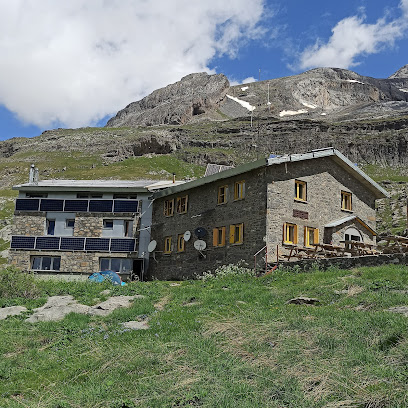
A Borda Samper
Experience authentic Spanish flavors at A Borda Samper, your go-to tapas bar in Torla-Ordesa, Huesca.
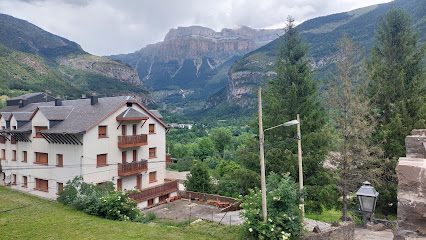
La Cantera
Discover authentic Spanish flavors at La Cantera, a beloved restaurant in Broto offering delicious dishes and warm hospitality.
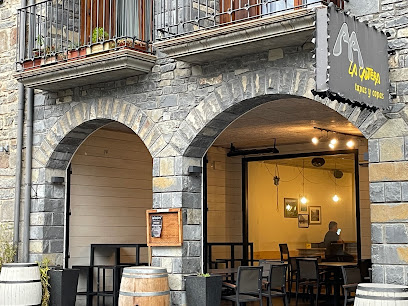
Bar Restaurante Arazas
Discover delicious grilled dishes at Bar Restaurante Arazas in Broto, where local flavors meet warm hospitality amidst stunning Huesca landscapes.
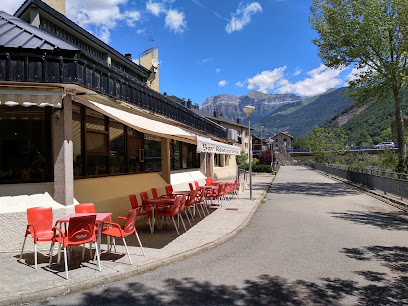
Restaurante Mesón Sorrosal
Experience authentic Spanish cuisine with breathtaking mountain views at Restaurante Mesón Sorrosal in Broto.
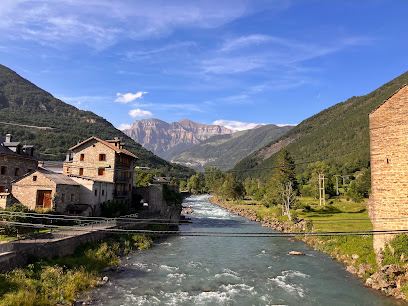
Markets, malls and hidden boutiques
Ordesa y Monte Perdido National Park
Explore the breathtaking beauty of Ordesa y Monte Perdido National Park, a UNESCO World Heritage site with stunning landscapes and diverse wildlife.
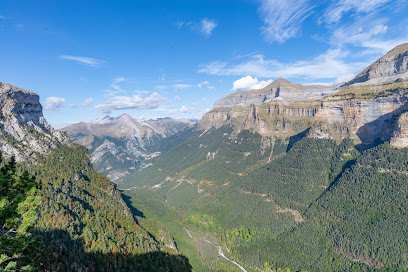
Bus - Centro Visitantes Sector Ordesa - Parking Libre
Explore the stunning landscapes and rich biodiversity of Ordesa National Park, a UNESCO World Heritage Site in the Pyrenees.
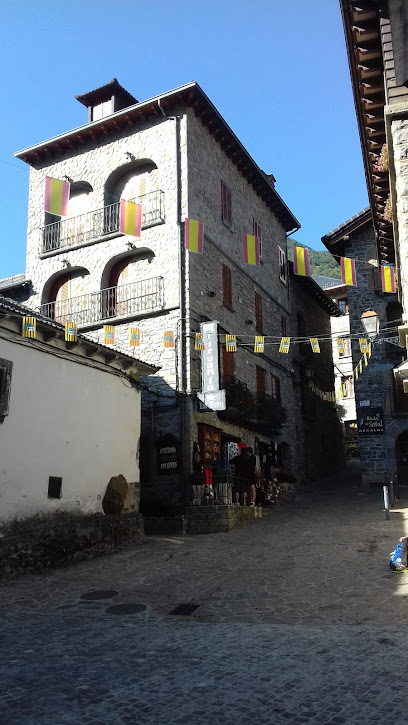
Ordesa y Monte Perdido National Park Visitor Centre
Explore the breathtaking Ordesa y Monte Perdido National Park Visitor Centre - your gateway to adventure in the stunning Pyrenees.
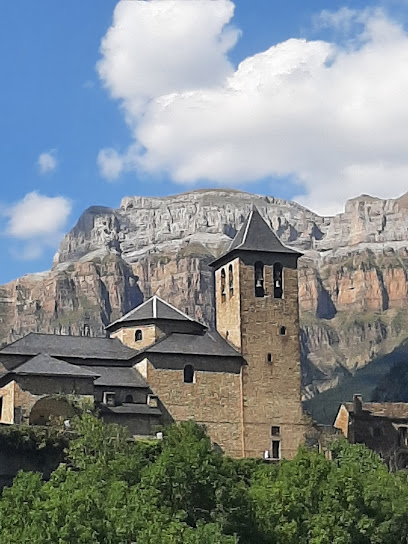
Cascada de la Cola de Caballo
Experience the breathtaking beauty of Cascada de la Cola de Caballo in Ordesa y Monte Perdido National Park, a natural paradise for adventurers and nature lovers.
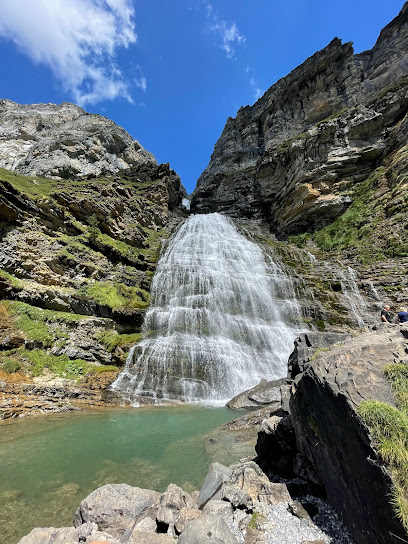
Ordesa Valley
Explore the breathtaking Ordesa Valley, a UNESCO World Heritage site in the Pyrenees, perfect for hiking, wildlife watching, and nature photography.
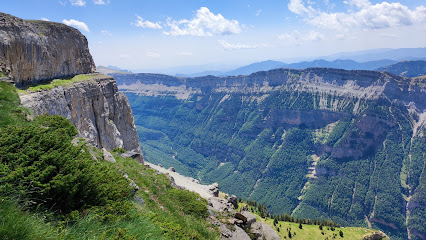
Quesos Bal de Broto
Explore the exquisite flavors of Huesca at Quesos Bal de Broto, where artisanal cheese meets local tradition.
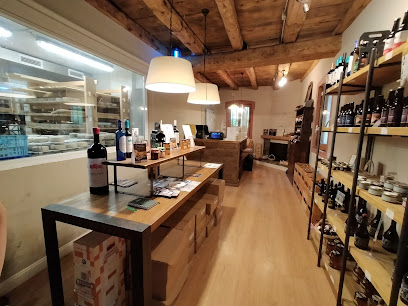
Miradores de Ordesa 4x4.Excursiones a P.N Ordesa y Monte Perdido. y Bujaruelo en 4×4
Experience the breathtaking beauty of Ordesa National Park with expert-guided 4x4 tours through stunning landscapes and rich biodiversity.

Senda de los Cazadores
Explore the breathtaking Senda de los Cazadores in the stunning Valle de Ordesa, a must-visit hiking area in the heart of the Spanish Pyrenees.
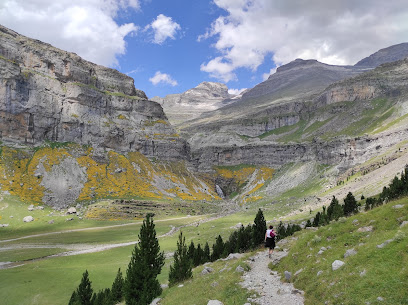
Alquiler de esquís en Formigal Boutique Nepal
Experience top-notch ski rentals and expert advice at Alquiler de esquís en Formigal Boutique Nepal, your gateway to winter adventures in the Pyrenees.
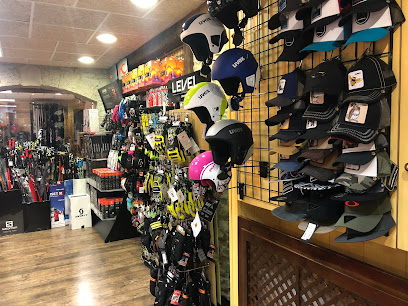
Mundo Glaciar Shop
Discover top-notch snowboarding gear and expert advice at Mundo Glaciar Shop in Biescas, your go-to destination for winter sports.
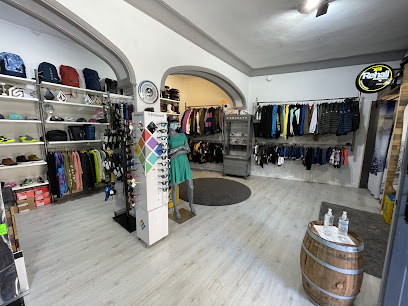
Outlet de la Montaña
Explore the best in sporting goods at Outlet de la Montaña, your premier destination for outdoor adventure gear in Huesca.
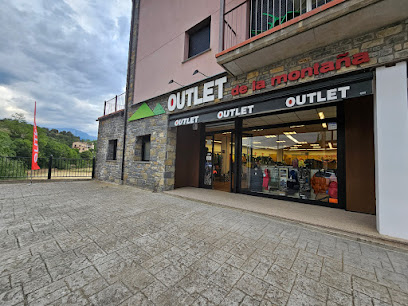
La Tienda de Montaña Torla-Ordesa
Discover top-tier exercise equipment at La Tienda de Montaña Torla-Ordesa, nestled in the breathtaking landscapes of Ordesa National Park.
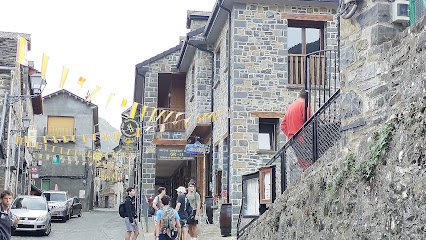
Carnicería Bun
Discover the authentic flavors of Huesca at Carnicería Bun, a renowned butcher shop in the scenic town of Torla-Ordesa, specializing in quality meats and local delicacies.
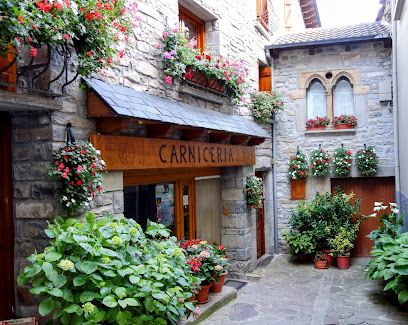
Cascada de Arripas
Discover the breathtaking beauty of Cascada de Arripas, a stunning waterfall in the Ordesa Valley, perfect for nature lovers and adventurers.
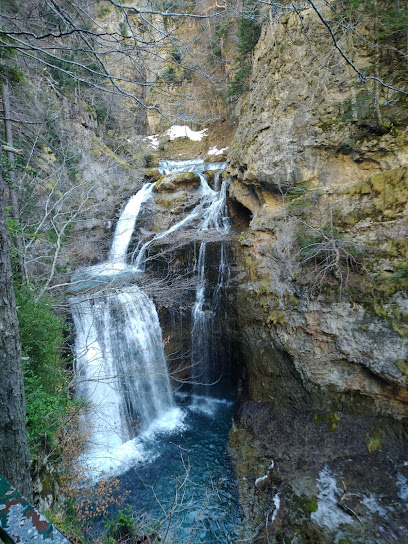
Productos Ordesano | Ginebras Premium, Pacharán, Licores e Infusiones
Explore the rich flavors of premium gins and liqueurs at Productos Ordesano, your gateway to the best of Spanish distillation.

Essential bars & hidden hideouts
Ordesa 88
Discover the flavors of Aínsa at Ordesa 88, where grilled specialties meet a warm and inviting atmosphere for the perfect dining experience.

Restaurante La Cocinilla
Experience the rich flavors of Huesca at Restaurante La Cocinilla, where grilled specialties and a cozy atmosphere await every visitor.

El Duende
Experience the authentic flavors of Spanish cuisine at El Duende, nestled in the picturesque setting of Torla-Ordesa.
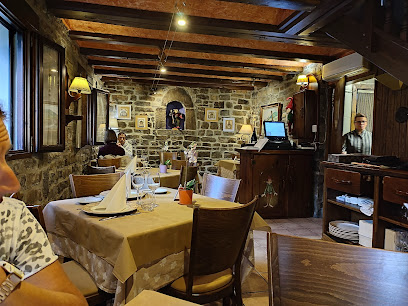
Restaurante Pizzería El Taillón
Discover the taste of Italy at Restaurante Pizzería El Taillón, where delicious pizzas and Italian cuisine await in the heart of Torla-Ordesa.
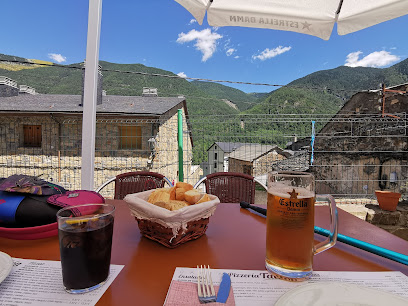
Restaurante Casa Joaquín
Experience the best of local flavors at Restaurante Casa Joaquín, where grilled dishes and warm hospitality await in Broto, Huesca.
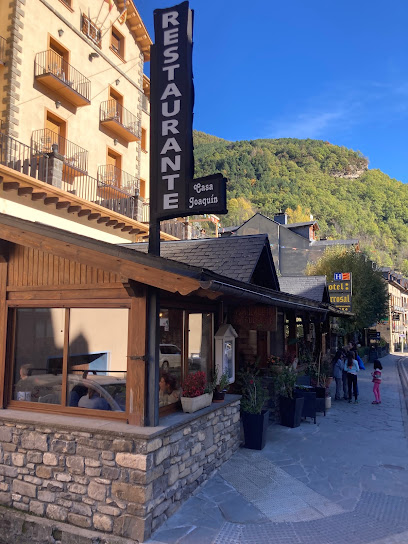
Cafetería Meliz
Discover the charm of Cafetería Meliz in Sarvisé - where delicious grilled dishes meet aromatic coffee in a cozy setting.

Bar restaurante La Cabaña Grill & Chill
Discover the rich flavors of grilled delights at La Cabaña Grill & Chill, a must-visit restaurant in El Pueyo de Jaca, Huesca.
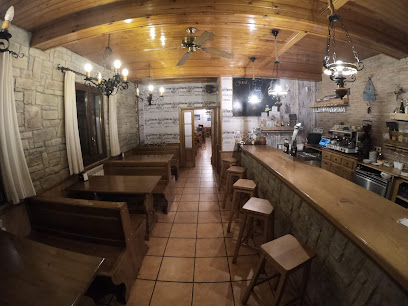
Cascada de la Cola de Caballo
Explore the stunning beauty of Cascada de la Cola de Caballo in Ordesa y Monte Perdido National Park, a must-visit natural wonder in Spain.
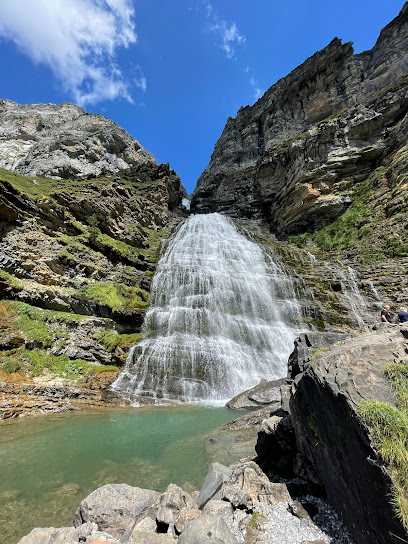
Casa Vallés
Discover the flavors of Spain at Casa Vallés, a charming tavern in Broto offering a delightful array of tapas and local dishes amidst stunning mountain views.
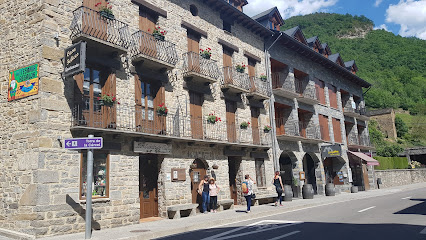
A Borda Samper
Savor the best of Spanish cuisine at A Borda Samper in Torla-Ordesa, where delicious tapas and a cozy atmosphere await you.
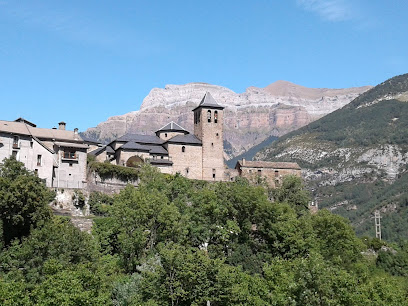
La Cantera
Discover authentic flavors and stunning views at La Cantera, a charming restaurant in Broto, Huesca, perfect for food lovers and explorers alike.
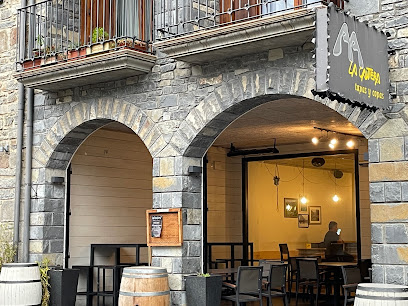
Miradores de Ordesa 4x4.Excursiones a P.N Ordesa y Monte Perdido. y Bujaruelo en 4×4
Immerse yourself in the stunning landscapes of Ordesa and Monte Perdido National Park with Miradores de Ordesa's thrilling 4x4 excursions.
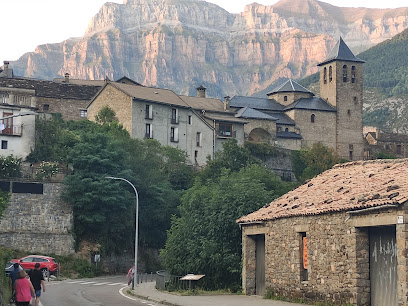
Bar Aragonés
Experience the authentic flavors and vibrant atmosphere of Bar Aragonés in the heart of Boltaña, a perfect retreat for every traveler.
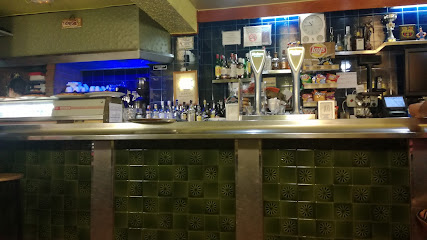
Bar Restaurante Arazas
Experience the authentic taste of the Spanish grill at Bar Restaurante Arazas in Broto, Huesca, where local flavors meet stunning mountain views.
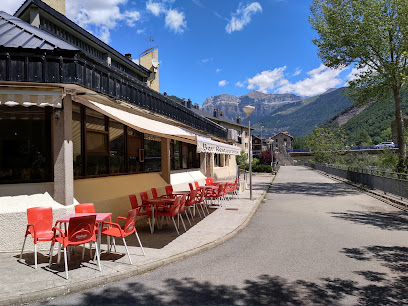
Bar Casacas
Discover the authentic flavors of Spain at Bar Casacas, a charming tapas and piano bar in Bielsa, Huesca, offering a delightful culinary experience.
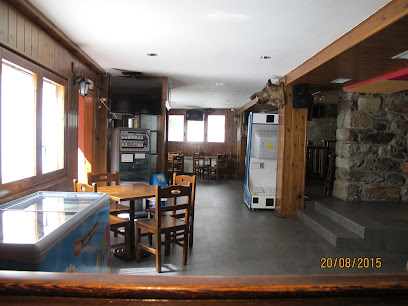
Local Phrases about Ordesa y Monte Perdido National Park
-
- HelloHola
[oh-lah] - GoodbyeAdiós
[ah-dee-ohs] - YesSí
[see] - NoNo
[noh] - Please/You're welcomePor favor/De nada
[por fah-bohr/deh nah-dah] - Thank youGracias
[grah-thyahs] - Excuse me/SorryPerdón/Lo siento
[pehr-dohn/loh see-ehn-toh] - How are you?¿Cómo estás?
[koh-moh ehs-tahs] - Fine. And you?Bien. ¿Y tú?
[byehn. ee too] - Do you speak English?¿Hablas inglés?
[ah-blahs een-glehs] - I don't understandNo entiendo
[noh ehn-tyen-doh]
- HelloHola
-
- I'd like to see the menu, pleaseMe gustaría ver el menú, por favor
[meh goo-stah-ree-ah behr ehl meh-noo, por fah-bohr] - I don't eat meatNo como carne
[noh koh-moh kahr-neh] - Cheers!¡Salud!
[sah-loohd] - I would like to pay, pleaseMe gustaría pagar, por favor
[meh goo-stah-ree-ah pah-gahr, por fah-bohr]
- I'd like to see the menu, pleaseMe gustaría ver el menú, por favor
-
- Help!¡Ayuda!
[ah-yoo-dah] - Go away!¡Vete!
[veh-teh] - Call the Police!¡Llama a la Policía!
[yah-mah ah lah poh-lee-thee-ah] - Call a doctor!¡Llama a un médico!
[yah-mah ah oon meh-dee-koh] - I'm lostEstoy perdido
[ehs-toy pehr-dee-doh] - I'm illEstoy enfermo
[ehs-toy ehn-fehr-moh]
- Help!¡Ayuda!
-
- I'd like to buy...Me gustaría comprar...
[meh goo-stah-ree-ah kohm-prahr...] - I'm just lookingSolo estoy mirando
[soh-loh ehs-toy meer-ahn-doh] - How much is it?¿Cuánto cuesta?
[kwan-toh kwehs-tah] - That's too expensiveEsto es demasiado caro
[ehs-toh ehs deh-mah-syah-doh kahr-oh] - Can you lower the price?¿Puede bajar el precio?
[pweh-deh bah-hahr ehl preh-syoh]
- I'd like to buy...Me gustaría comprar...
-
- What time is it?¿Qué hora es?
[keh oh-rah ehs] - It's one o'clockEs la una en punto
[ehs lah oo-nah ehn poon-toh] - Half past (10)Las diez y media
[lahs dyehs ee meh-dee-ah] - MorningMañana
[mah-nyah-nah] - AfternoonTarde
[tahr-deh] - EveningNoche
[noh-cheh] - YesterdayAyer
[ah-yehr] - TodayHoy
[oy] - TomorrowMañana
[mah-nyah-nah] - 1Uno
[oo-noh] - 2Dos
[dohs] - 3Tres
[trehs] - 4Cuatro
[kwah-troh] - 5Cinco
[theen-koh] - 6Seis
[sehs] - 7Siete
[syeh-teh] - 8Ocho
[oh-choh] - 9Nueve
[nweh-veh] - 10Diez
[dyehs]
- What time is it?¿Qué hora es?
-
- Where's a/the...?¿Dónde está el/la...?
[dohn-deh ehs-tah ehl/lah] - What's the address?¿Cuál es la dirección?
[kwahl ehs lah dee-rehk-syon] - Can you show me (on the map)?¿Puedes mostrarme (en el mapa)?
[pweh-dehs mohs-trar-meh (ehn ehl mah-pah)] - When's the next (bus)?¿Cuándo es el próximo (autobús)?
[kwan-doh ehs ehl proh-ksee-moh (ow-toh-boos)] - A ticket (to ....)Un billete (a ....)
[oon bee-yeh-teh (ah)]
- Where's a/the...?¿Dónde está el/la...?
History of Ordesa y Monte Perdido National Park
-
The Ordesa y Monte Perdido National Park has evidence of human habitation dating back to prehistoric times. Archaeological findings suggest that early humans utilized the park's caves and natural shelters. These early inhabitants left behind tools and artifacts, indicating a hunter-gatherer lifestyle.
-
During the medieval period, the region became significant for its pastoral activities. Shepherds practiced transhumance, moving livestock between seasonal pastures. The ancient pathways and stone structures found throughout the park are remnants of this pastoral tradition, which remains an integral part of the local culture.
-
The Pyrenean region, including Ordesa y Monte Perdido, has been a site of various military conflicts, particularly during the Pyrenean Wars in the late 18th century. The rugged terrain provided strategic advantages for military maneuvers and border defenses between Spain and France.
-
Ordesa y Monte Perdido National Park was established in 1918, making it one of Spain's oldest national parks. Initially, it covered the Ordesa Valley but was later expanded to include the Monte Perdido massif and surrounding areas. The park's creation aimed to protect its unique landscapes and biodiversity.
-
In 1997, the park was designated a UNESCO World Heritage Site as part of the Pyrénées - Mont Perdu World Heritage listing. This recognition highlights the park's outstanding natural beauty and geological significance, as well as its cultural landscapes shaped by centuries of human activity.
-
Monte Perdido, the third-highest peak in the Pyrenees, is a key geological feature within the park. The area is renowned for its karst landscapes, deep canyons, and glacial formations. The park's geology has been a subject of scientific study for many years, contributing to our understanding of mountain formation and erosion processes.
-
The park is home to a wide variety of flora and fauna, some of which are endemic to the Pyrenees. Efforts to conserve species such as the Pyrenean chamois, bearded vulture, and numerous plant species have been central to the park's management strategies. These conservation efforts are crucial for maintaining the park's ecological balance.
Ordesa y Monte Perdido National Park Essentials
-
Ordesa y Monte Perdido National Park is located in the Aragonese Pyrenees in northern Spain. The nearest international airport is Zaragoza Airport, approximately 165 kilometers away. From Zaragoza, you can take a bus or train to the town of Sabiñánigo, and then a local bus to Torla, the main gateway to the park. Alternatively, you can rent a car and drive; the journey from Zaragoza takes about 2.5 hours. Another option is to fly into Barcelona El Prat Airport and drive or take a train to Zaragoza before continuing to Torla.
-
Once in the area, the most convenient way to explore Ordesa y Monte Perdido National Park is by car, especially if you plan to visit multiple trailheads and viewpoints. Parking is available at the main entrances, but it can fill up quickly during peak seasons. Alternatively, there are local buses that run between nearby towns and the park entrances. During the summer months, a shuttle bus service operates from Torla to the Ordesa Valley to reduce traffic congestion. For those who prefer a more eco-friendly option, cycling is also a popular way to navigate the park.
-
The official currency in Spain is the Euro (EUR). Credit and debit cards are widely accepted in hotels, restaurants, and shops in the towns surrounding the park. However, it is advisable to carry some cash, especially when venturing into more remote areas or smaller establishments. ATMs are available in towns like Torla and Broto, but it’s a good idea to withdraw cash before heading into the park.
-
Ordesa y Monte Perdido National Park is generally a safe destination for tourists. However, like any popular tourist area, it’s important to stay vigilant. Avoid leaving valuables in your car, especially in visible areas. While the park itself is safe, the rugged terrain can be hazardous. Stick to marked trails, wear appropriate footwear, and be prepared for sudden weather changes. There are no specific high-crime areas targeting tourists, but it’s always wise to be cautious and aware of your surroundings.
-
In case of an emergency, dial 112 for immediate assistance. This number connects you to emergency services including police, fire, and medical help. The nearest medical facilities are in the towns of Torla and Broto, and there are several pharmacies in the area where you can purchase basic medical supplies. It’s recommended to have travel insurance that covers medical emergencies and outdoor activities. For serious injuries or emergencies while hiking, there are mountain rescue services available.
-
Fashion: Do wear appropriate outdoor clothing and sturdy hiking boots. Layers are recommended due to changing weather conditions. Avoid wearing flip-flops or open-toed shoes on the trails. Religion: Do respect local customs and traditions. While the park itself is secular, nearby towns may have religious sites where modest attire is appreciated. Public Transport: Do use the shuttle bus service during peak months to reduce traffic in the park. Don’t eat or drink on public transport. Greetings: Do greet locals with a friendly 'Hola' or 'Buenos días'. A handshake is common when meeting someone for the first time. Eating & Drinking: Do try local Aragonese cuisine and accept food offerings graciously. Don’t refuse hospitality or local food as it is considered impolite.
-
To experience Ordesa y Monte Perdido National Park like a local, visit in the early morning or late afternoon to avoid the crowds and enjoy the tranquility. Engage with locals in the nearby towns; they often have valuable insights and tips. Don’t miss the opportunity to try local dishes such as 'ternasco' (roast lamb) and 'migas' (fried breadcrumbs with meat). For a unique experience, consider a guided tour with a local expert to learn more about the park’s flora, fauna, and history. Additionally, visiting during different seasons offers varied landscapes and experiences, from lush green valleys in the spring to snow-covered peaks in the winter.
Trending Landmarks in Ordesa y Monte Perdido National Park
-
Bus - Centro Visitantes Sector Ordesa - Parking Libre
-
Ordesa y Monte Perdido National Park Visitor Centre
-
Cascada de la Cola de Caballo
-
Llanos de La Larri
-
Monte Perdido
-
Ordesa Valley
-
Refugio de Góriz | Ordesa 2.200 m
-
Miradores de Ordesa 4x4.Excursiones a P.N Ordesa y Monte Perdido. y Bujaruelo en 4×4
-
Gradas de Soaso
-
Guias de Torla
-
Senda de los Cazadores
-
Cascada de la Cueva
-
Valle de Otal
-
Cascada del Estrecho
-
Cascada de Arripas
Nearby Cities to Ordesa y Monte Perdido National Park
-
Things To Do in Huesca
-
Things To Do in Arinsal
-
Things To Do in La Massana
-
Things To Do in Andorra la Vella
-
Things To Do in El Serrat
-
Things To Do in Ordino
-
Things To Do in Escaldes-Engordany
-
Things To Do in Lleida
-
Things To Do in Encamp
-
Things To Do in Canillo
-
Things To Do in Soldeu
-
Things To Do in Zaragoza
-
Things To Do in Pamplona
-
Things To Do in Pas de la Casa
-
Things To Do in Toulouse










